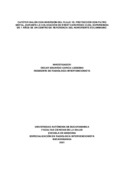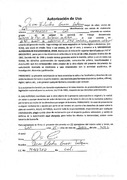Mostrar el registro sencillo del ítem
Catéter balón con inversión del flujo vs. Protección con filtro distal, durante la colocación de stent carotídeo (cas), experiencia de 7 años de un centro de referencia del nororiente colombiano
| dc.contributor.advisor | Mantilla García, Daniel Eduardo | |
| dc.contributor.advisor | Serrano Gómez, Sergio Eduardo | |
| dc.contributor.advisor | Reyes González, Adriana Lucila | |
| dc.contributor.author | García Ledesma, Oscar Eduardo | |
| dc.coverage.spatial | Colombia | spa |
| dc.date.accessioned | 2022-02-04T19:55:17Z | |
| dc.date.available | 2022-02-04T19:55:17Z | |
| dc.date.issued | 2021 | |
| dc.identifier.uri | http://hdl.handle.net/20.500.12749/15469 | |
| dc.description.abstract | Antecedentes y propósito: La colocación de stent carotídeo como opción terapéutica para la estenosis carotídea ha ido en aumento a lo largo de los años; por lo tanto, se requieren estudios para evaluar la seguridad y eficacia de sus materiales. El propósito de este estudio fue evaluar el filtro distal y el catéter guiado por balón proximal con inversión de flujo como dispositivos de protección durante la angioplastia carotídea y la colocación de stent. Métodos: Se trata de un estudio observacional retrospectivo de pacientes diagnosticados de estenosis carotídea tratados con angioplastia entre el 1 de enero de 2014 y el 30 de junio de 2020; analizamos una base de datos del servicio de radiología para comparar el filtro distal y el catéter guiado con balón proximal como dispositivos de protección durante la angioplastia. Resultados: Se realizaron 175 angioplastias, el filtro distal fue el dispositivo de protección embólica más utilizado (66%), las características basales de los pacientes no difirieron entre los grupos con diferentes dispositivos de protección embólica, con excepción del antecedente de dislipidemia (p < 0,000). Asimismo, no encontramos diferencias significativas entre los grupos en las complicaciones relacionadas con el dispositivo, tiempo de intervención (p=0,090), complicaciones no relacionadas (p=0,693) e independencia funcional a los 90 días (0,096). Conclusiones: En nuestro estudio, el catéter guiado con balón proximal y el dispositivo de protección con filtro distal como dispositivos de protección durante la colocación de stent carotídeo no mostraron diferencias significativas en cuanto a las complicaciones relacionadas con el sistema. | spa |
| dc.format.mimetype | application/pdf | spa |
| dc.language.iso | spa | spa |
| dc.rights.uri | http://creativecommons.org/licenses/by-nc-nd/2.5/co/ | * |
| dc.title | Catéter balón con inversión del flujo vs. Protección con filtro distal, durante la colocación de stent carotídeo (cas), experiencia de 7 años de un centro de referencia del nororiente colombiano | spa |
| dc.type | Thesis | eng |
| dc.title.translated | Flow reversal balloon catheter vs. Distal filter protection during carotid stenting (cas), a 7-year experience in a reference center in northeastern Colombia | spa |
| dc.degree.name | Especialista en Radiología Intervencionista | spa |
| dc.publisher.grantor | Universidad Autónoma de Bucaramanga UNAB | spa |
| dc.rights.local | Abierto (Texto Completo) | spa |
| dc.publisher.faculty | Facultad Ciencias de la Salud | spa |
| dc.publisher.program | Especialización en Radiología Intervencionista | spa |
| dc.description.degreelevel | Especialización | spa |
| dc.type.driver | info:eu-repo/semantics/masterThesis | spa |
| dc.type.local | Tesis | spa |
| dc.type.coar | http://purl.org/coar/resource_type/c_bdcc | |
| dc.subject.keywords | Medical sciences | spa |
| dc.subject.keywords | Health sciences | spa |
| dc.subject.keywords | Embolic protection devices | spa |
| dc.subject.keywords | Carotid stenosis | spa |
| dc.subject.keywords | Carotid artery diseases | spa |
| dc.subject.keywords | Stroke | spa |
| dc.subject.keywords | Endovascular procedures | spa |
| dc.identifier.instname | instname:Universidad Autónoma de Bucaramanga - UNAB | spa |
| dc.identifier.reponame | reponame:Repositorio Institucional UNAB | spa |
| dc.type.hasversion | info:eu-repo/semantics/acceptedVersion | spa |
| dc.rights.accessrights | info:eu-repo/semantics/openAccess | spa |
| dc.relation.references | Faries P, Chaer R, Patel S,et al. Current Management of Extracranial Carotid Artery Disease. Vascular and Endovascular Surgery. 2006;40(3):165-175. | spa |
| dc.relation.references | Cole T, Mezher A, Catapano J, et al. Nationwide Trends in Carotid Endarterectomy and Carotid Artery Stenting in the Post-CREST Era. Stroke. 2020;51(2):579-587. | spa |
| dc.relation.references | Cremonesi A, Setacci C, Bignamini A, et al. Carotid Artery Stenting. Stroke. 2006;37(9):2400-2409. | spa |
| dc.relation.references | Rosenfield K., Babb J, Cates C, et al. Clinical competence statement on carotid stenting: Training and credentialing for carotid stenting—multispecialty consensus recommendations. Journal of the American College of Cardiology, 2005;45(1), pp.165-174. | spa |
| dc.relation.references | Levy E., Ecker R, Thompson J, et al. Toward clinical equipoise: the current case for carotid angioplasty and stent placement. Neurosurgical Focus. 2005;18(1):.1-8. | spa |
| dc.relation.references | Giordan E. and Lanzino, G. Carotid Angioplasty and Stenting and Embolic Protection. Current Cardiology Reports, 2017;19(12). Doi: 10.1007/s11886-017-0932-0 | spa |
| dc.relation.references | Mokin M, Dumont T, Mihyun-Chi J, et al. Proximal versus distal protection during carotid artery stenting: analysis of the two treatment approaches and associated clinical outcomes. World Neurosurg. 2014;81(3-4):543–8. | spa |
| dc.relation.references | Giri J, Yeh R, Kennedy K, et al. Unprotected carotid artery stenting in modern practice. Catheter Cardiovasc Interv. 2014;83(4):595–602. | spa |
| dc.relation.references | Bijuklic K, Wandler A, Hazizi F, et al. The PROFI study (Prevention of Cerebral Embolization by Proximal Balloon Occlusion Compared to Filter Protection During Carotid Artery Stenting) : a prospective randomized trial. J Am Coll Cardiol. 2012;59(15):1383-9. | spa |
| dc.relation.references | Lee J, Sohn H, Chung S, ET AL.Clinical Analysis Comparing Efficacy between a Distal Filter Protection Device and Proximal Balloon Occlusion Device during Carotid Artery Stenting. Journal of Korean Neurosurgical Society, 2015;58(4):316-20. | spa |
| dc.relation.references | Stabile E, Salemme L, Sorropago G, et al. Proximal endovascular occlusion for carotid artery stenting : results from a prospective registry of 1,300 patients. J Am Coll Cardiol. 2010;55(16):1661-7. | spa |
| dc.relation.references | Naylor A, London N, Bell P. Carotid and Vertebral Artery Transluminal Angioplasty Study. The Lancet, 1997;349(9061):1324-5. | spa |
| dc.relation.references | International Carotid Stenting Study investigators. Ederle J, Dobson J, et al. Carotid artery stenting compared with endarterectomy in patients with symptomatic carotid stenosis (International Carotid Stenting Study): an interim analysis of a randomised controlled trial. The Lancet. 2010;375(9719):98597. | spa |
| dc.relation.references | Reiff T, Stingele R, Eckstein H, et al. Stent-Protected Angioplasty in Asymptomatic Carotid Artery Stenosis vs. Endarterectomy: SPACE2 – a Three-Arm Randomised-Controlled Clinical Trial. International Journal of Stroke. 2009;4(4):294-299. | spa |
| dc.relation.references | Mas J, Chatellier G, Beyssen B, et al. Endarterectomy versus Stenting in Patients with Symptomatic Severe Carotid Stenosis. New England Journal of Medicine, 2006;355(16):1660-71. | spa |
| dc.relation.references | Bussiere M, Pelz DM, Kalapos P, et al. Results using a self-expanding stent alone in the treatment of severe symptomatic carotid bifurcation stenosis. J Neurosurg 2008;109:454 –60 | spa |
| dc.contributor.cvlac | Mantilla García, Daniel Eduardo [0001437130] | spa |
| dc.contributor.cvlac | Serrano Gómez, Sergio Eduardo [0001521095] | spa |
| dc.contributor.googlescholar | Mantilla García, Daniel Eduardo [PUqdPK8AAAAJ] | spa |
| dc.contributor.orcid | Serrano Gómez, Sergio Eduardo [0000-0001-6418-7116] | spa |
| dc.contributor.scopus | Mantilla García, Daniel Eduardo [56641574500] | spa |
| dc.contributor.scopus | Serrano Gómez, Sergio Eduardo [57197758865] | spa |
| dc.subject.lemb | Ciencias médicas | spa |
| dc.identifier.repourl | repourl:https://repository.unab.edu.co | spa |
| dc.description.abstractenglish | Background and purpose: The carotid stent placement as a therapeutic option for carotid stenosis has been increasing among years; therefore, studies are required to evaluate the security and efficacy of its materials. The purpose of this study was to evaluate the distal filter and the proximal balloon-guided catheter with flow inversion as protection devices during carotid angioplasty and stenting. Methods: This is a retrospective, observational study of patients diagnosed with carotid stenosis treated with angioplasty between January 1, 2014, and June 30, 2020; we analyzed a radiology service database to compare the distal filter and the proximal balloon-guided catheter as protection devices during angioplasty. Results: One hundred seventy-five angioplasties were performed, the distal filter was the most prevalent embolic protection device used (66%), patients baseline characteristics did not differ between groups with different embolic protection devices, with the exception of history of dyslipidemia (p< 0.000). As well, we did not find any significant differences between the groups in the device related complications, intervention time (p=0.090), unrelated complications (p=0.693) and functional independence at 90 days (0.096). Conclusions: In our study the proximal balloon-guided catheter and the distal filter protection device as protection devices during the carotid stenting didn't show significant differences regarding complications related to the system | spa |
| dc.subject.proposal | Ciencias de la salud | spa |
| dc.subject.proposal | Dispositivos de protección embólica | spa |
| dc.subject.proposal | Estenosis carotídea | spa |
| dc.subject.proposal | Enfermedades de la arteria carótida | spa |
| dc.subject.proposal | Accidente cerebrovascular | spa |
| dc.subject.proposal | Procedimientos endovasculares | spa |
| dc.type.redcol | http://purl.org/redcol/resource_type/TM | spa |
| dc.rights.creativecommons | Atribución-NoComercial-SinDerivadas 2.5 Colombia | spa |
| dc.coverage.campus | UNAB Campus Bucaramanga | spa |
| dc.description.learningmodality | Modalidad Presencial | spa |



